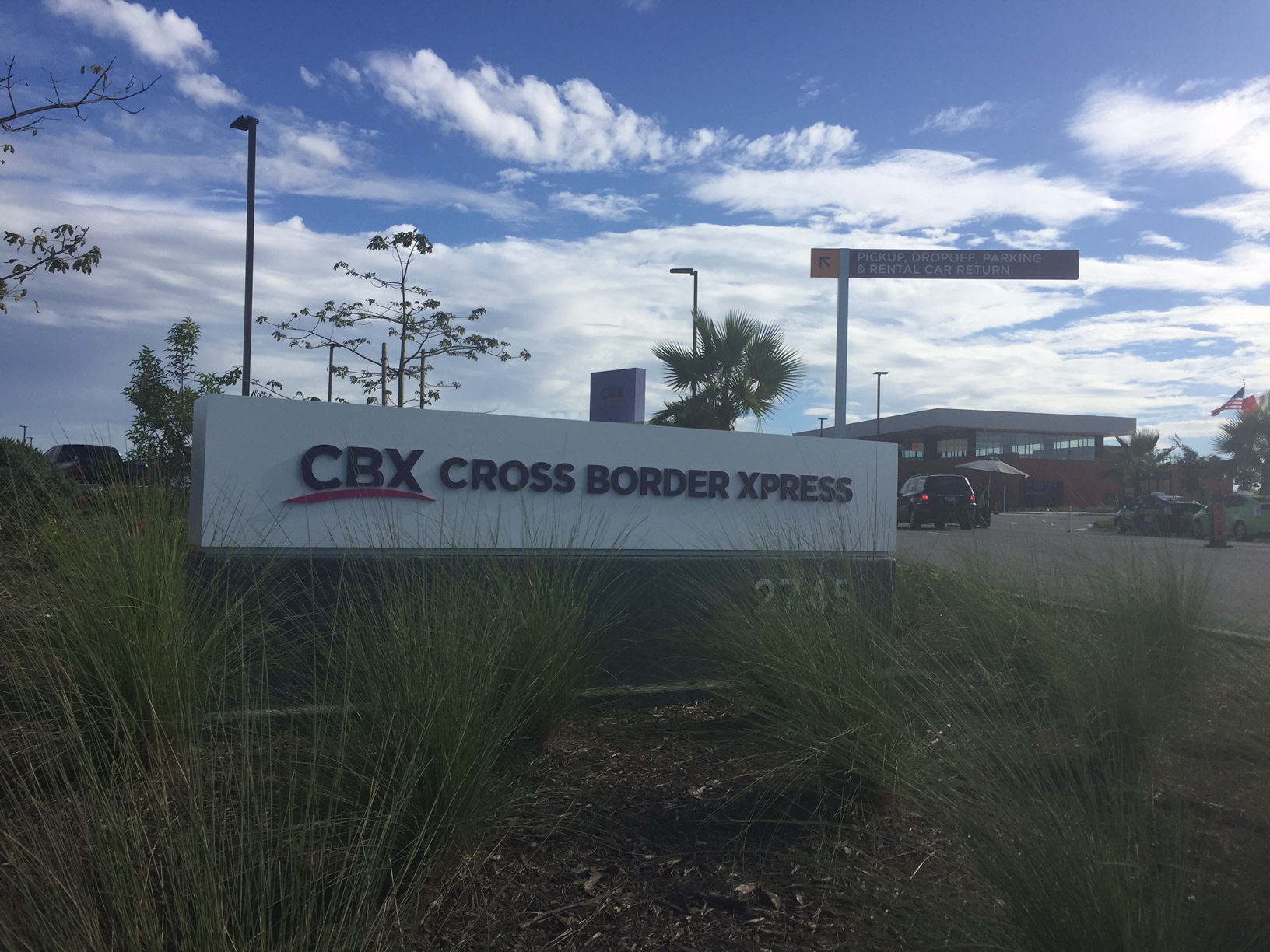Bridge
Entrepreneurs and investors have funded a $120 million bridge/walkway connecting the U.S. with Tijuana’s International Airport. The Cross Border Xpress (CBX) is a 390-foot enclosure, which stretches from Otay Mesa and clears the barbed-wire border fence that sits only a few feet from the terminals. There are frosted glass panels inside the bridge so travelers cannot see CBP border activity, and a plaque in the middle of the bridge officially marks the imaginary line separating the two countries.
The Cross Border Xpress construction began in 2014 and stalled after workers were unable to cross into the U.S. to complete the project. As a result, building the CBX took place in six sections, two on Mexican soil and four in the U.S. When workers joined the sections, authorities of both countries agreed to temporarily move the border boundary about ten feet so workers wouldn’t be required to undergo a plethora of burdensome inspections.
Purpose
The main purpose of the Cross Border Xpress is to make it is easier for travelers to use Tijuana’s airport. For Americans – once in Mexico, there are many more daily flight options to domestic destinations like Cabo San Lucas, Puerto Vallarta, Mexico City, Guadalajara and other popular, exotic locations. These flights are often much cheaper and more direct than flying from San Diego or Orange County. Tijuana also has direct flights to a number of destinations that you cannot reach from San Diego – for example, Shanghai.
The December opening of the Cross Border Xpress marks the latest effort by U.S. Customs and Border Protection to keep up with the influx of international traffic by gathering private money to build during a time of tight government spending. The airport is also chipping in for additional security personnel to screen the influx of new passengers.
For years, U.S. travelers in Southern California have taken advantage of cheap fares and direct flights throughout Mexico via Tijuana. As many as 2.4 million passengers a year cross the border into the U.S. to start or end their trip. However, the major drawback has always been getting back into California. Before CBX, flyers would be forced to inconveniently cab to Tijuana’s airport from San Ysidro or Otay Mesa, which are two of the busiest border crossings in the world.
Investors
A combination of Mexican and American investors, including real-estate mogul Sam Zell, paid for the Cross Border Xpress. The bridge has reduced congestion at busy border checkpoints in San Diego through increased security, new technology, and the addition of more officers.

New Travel
Airlines indicate that the Cross Border Xpress has generated new travel. Aeromexico and Volaris have added new flights from Tijuana to lure potential Southern California travelers. In May, Aeromexico added flights to a number of destinations including Cabo San Lucas and Chihuahua. Some airlines are providing assigned parking, and a premium-customer lounge at the bridge for top customers of SkyTeam. Set to fly between Tijuana and Mexico City is a new 787 Dreamliner plane.
How it Works
Travelers must have a boarding pass to use the Cross Border Xpress. Border crossing lines are for air travelers and not open to the general public. From San Diego, passengers show their boarding passes and CBX ticket. Once in Mexico, there is an immigration checkpoint, requiring completed international travel documents, before entering Tijuana’s airport. Returning to the US requires the same documents, but immigration lines are typically no longer than 10-15 minutes! Signs directing passengers across CBX are plentiful, in English, and easy to read. Tijuana’s airport is pleasant, smaller, and not too busy, with the exception of summer and the holidays. Currently, the overall process to and from Tijuana is quick and easy.
CBX currently charges $15 per flier each way – up from $12 in December, and $40 for families up to six people. CBX has plans for future development, including a multistory parking garage, multiple hotels, various retail outlets, and a gas station. Further, Tijuana is set to unload $150 million for development and revitalization over the next five years.

Michael J. Libutti is a Broker and Attorney at Class Realty Group’s San Diego office. Reach him by email at mlibutti@classrealtygroup.com or by phone at 858-220-4295.






